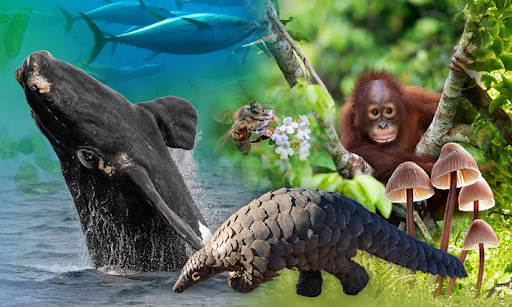Everything Has Purpose: Unraveling the Interconnectedness of the Universe
The universe, with its boundless expanse and intricate design, often appears to be a realm beyond human comprehension. Yet, everything within it—from the cosmic scale of galaxies to the minutiae of daily life—plays a crucial role in maintaining the delicate balance of existence. This blog explores the profound purposes of various elements, extending from the vastness of space to the intricacies of life on Earth. By examining these components, we aim to understand their roles in the grand tapestry of the cosmos and appreciate how each part contributes to the whole.
The Cosmic Scale: A Symphony of Celestial Bodies
1. The Universe: An Ever-Expanding Enigma
The universe is an expansive entity that began with the Big Bang approximately 13.8 billion years ago. This event marked the beginning of time, space, and the evolution of matter. The universe is continually expanding, a phenomenon first observed by Edwin Hubble in 1929. The rate of this expansion is described by the Hubble constant, currently estimated at around 73.3 kilometers per second per megaparsec (km/s/Mpc) (NASA, 2022). This expansion ensures that galaxies move away from each other, facilitating the spread of essential elements like carbon, oxygen, and nitrogen across the cosmos.
2. Galaxies: The Cosmic Cities
Galaxies are vast collections of stars, gas, dust, and dark matter bound together by gravity. There are estimated to be over two trillion galaxies in the observable universe (Hubble Heritage Team, 2021). Our galaxy, the Milky Way, is a barred spiral galaxy containing about 100 to 400 billion stars. Each galaxy plays a role in the cosmic cycle of matter, contributing to the formation of new stars and planetary systems. The interactions between galaxies, including mergers and collisions, can trigger star formation and the development of new planetary systems.
3. Stars: The Cosmic Furnaces
Stars are the fundamental building blocks of galaxies and the universe. They generate light and heat through nuclear fusion, a process where hydrogen atoms fuse to form helium, releasing energy. This energy sustains life on planets like Earth. The lifecycle of a star, from its birth in a stellar nursery to its death as a supernova or white dwarf, contributes to the distribution of heavy elements throughout the galaxy. For instance, elements like iron and gold are formed in the cores of massive stars and spread through supernova explosions (NASA, 2022).
4. Black Holes: The Cosmic Oddities
Black holes are regions in space where gravity is so strong that nothing, not even light, can escape their pull. They form from the remnants of massive stars after they explode as supernovae. Supermassive black holes, found at the centers of most galaxies, including the Milky Way, can contain millions to billions of times the mass of the Sun. They play a crucial role in galaxy formation and evolution by influencing the movement of stars and gas in their vicinity (Event Horizon Telescope Collaboration, 2019).
The Solar System: An Orchestrated Ensemble
1. The Sun: The Lifegiver
The Sun, a G-type main-sequence star, is the primary source of energy for our solar system. It accounts for about 99.86% of the solar system's mass and provides the heat and light necessary for life on Earth. The Sun's energy drives weather patterns, ocean currents, and the photosynthesis process in plants. Its energy output is approximately 3.8 x 10^26 watts (NASA, 2021), a staggering figure that influences almost every aspect of life on Earth.
2. Planets: The Diverse Orbits
The eight planets in our solar system—Mercury, Venus, Earth, Mars, Jupiter, Saturn, Uranus, and Neptune—each have unique characteristics and roles. For instance, Jupiter's massive size and strong gravitational field protect Earth from potential comet and asteroid impacts by attracting many of these space objects. Saturn's rings, composed of ice and rock particles, offer clues about the formation of planetary rings and the history of the solar system.
3. Moons: The Silent Companions
Moons, or natural satellites, orbit planets and contribute to various planetary processes. Earth's moon, for instance, affects tides through its gravitational influence, which plays a role in the health of coastal ecosystems. Moons like Europa, one of Jupiter's moons, are of interest for their potential subsurface oceans, which might harbor conditions suitable for life (NASA, 2021).
4. Asteroids and Comets: Remnants of the Early Solar System
Asteroids and comets are remnants from the early solar system. Asteroids, primarily found in the asteroid belt between Mars and Jupiter, are rocky bodies that can provide insights into the early solar system's formation. Comets, composed of ice and organic compounds, originate from the outer regions of the solar system and can bring water and organic materials to planetary bodies. Studying these objects helps scientists understand the solar system's history and the potential for life elsewhere (NASA, 2022).
Earth: A Unique Oasis
1. The Planet: Earth’s Exceptional Position
Earth's position in the "habitable zone" of the solar system allows it to support liquid water, a crucial requirement for life. The planet's atmosphere, composed mainly of nitrogen (78%) and oxygen (21%), creates a stable environment for life. This balance is maintained through various natural processes, including the carbon cycle, which regulates atmospheric carbon dioxide levels and mitigates climate change.
2. The Atmosphere: Earth's Protective Shield
Earth's atmosphere acts as a protective shield against harmful solar radiation and space debris. It also plays a key role in climate regulation. The greenhouse gases in the atmosphere, such as carbon dioxide and methane, trap heat and maintain Earth's temperature. However, human activities have increased the concentration of these gases, leading to global warming and climate change (IPCC, 2021).
3. The Biosphere: A Web of Life
The biosphere encompasses all living organisms and their interactions with the environment. It includes various ecosystems, such as forests, oceans, and grasslands, each playing a role in supporting life. For example, tropical rainforests, which cover about 7% of Earth's land surface, contain more than half of the world's species and play a crucial role in carbon sequestration (WWF, 2021).
The Elements of Life: Air, Water, and Ecosystems
1. Air: The Essential Mix
Air, a mixture of gases including nitrogen (78%), oxygen (21%), and trace amounts of carbon dioxide and other gases, is essential for life. Oxygen supports cellular respiration, while nitrogen is vital for the formation of proteins and DNA. The balance of gases in the atmosphere is maintained through processes such as photosynthesis, where plants absorb carbon dioxide and release oxygen.
2. Water: The Universal Solvent
Water is a key component of life, acting as a solvent in biochemical reactions and regulating temperature. About 71% of Earth's surface is covered by water, with oceans holding 96.5% of this volume. Freshwater, found in rivers, lakes, and glaciers, is crucial for drinking, agriculture, and industry. The water cycle, involving evaporation, condensation, and precipitation, ensures the distribution and availability of this vital resource (USGS, 2022).
The Living World: Interdependence and Balance
1. Plants: The Providers of Oxygen
Plants are fundamental to life on Earth. Through photosynthesis, they convert carbon dioxide and sunlight into oxygen and glucose, providing the primary source of energy for nearly all life forms. Forests, which cover about 31% of Earth's land area, play a crucial role in maintaining atmospheric oxygen levels and supporting biodiversity.
2. Animals: The Interconnected Roles
Animals contribute to ecological balance in various ways. Herbivores help control plant populations, while carnivores regulate herbivore numbers. Pollinators, such as bees and butterflies, facilitate the reproduction of flowering plants. The interactions between different animal species and their environments maintain the stability of ecosystems.
3. Humans: The Impact and Responsibility
Humans have a profound impact on the environment through activities such as deforestation, pollution, and climate change. However, they also have the capacity to effect positive change. Conservation efforts, sustainable practices, and technological innovations aim to address environmental challenges and preserve the delicate balance of Earth's systems.
The Forces of Nature: Gravity and Space Phenomena
1. Gravity: The Cosmic Force
Gravity, a fundamental force of nature, governs the behavior of celestial bodies and influences various natural phenomena. It is responsible for the formation of planets, stars, and galaxies, and determines the orbits of celestial objects. On Earth, gravity affects tides, weather patterns, and the structure of the planet itself. The strength of gravity varies depending on the mass of objects and the distance between them, following Newton's law of universal gravitation.
2. Space Phenomena: The Dynamic Universe
Space phenomena, such as supernovae, gamma-ray bursts, and neutron stars, contribute to the dynamic nature of the universe. Supernovae, the explosive deaths of massive stars, spread heavy elements throughout space, enriching the interstellar medium. Gamma-ray bursts, the most energetic explosions in the universe, release intense bursts of gamma rays that can affect nearby galaxies. Neutron stars, the remnants of supernovae, possess extremely strong magnetic fields and rapid rotation, leading to unique astronomical phenomena (NASA, 2022).
Statistics and Studies: Quantifying the Universe’s Purpose
Recent studies provide valuable insights into the interconnectedness of the universe and Earth. For instance, research on the cosmic microwave background radiation, the afterglow of the Big Bang, has provided evidence supporting the current models of cosmology and the universe's expansion (Planck Collaboration, 2020). This radiation is remarkably uniform, with slight fluctuations that give clues about the early universe's density variations, influencing the formation of galaxies and large-scale structures.
1. Galactic Formation and Evolution Studies
Studies of galactic formation and evolution reveal the universe's complex history. Observations using the Hubble Space Telescope have identified over 100 billion galaxies in the observable universe, each with a unique formation history (Hubble Heritage Team, 2021). These observations show that galaxy formation is influenced by interactions with other galaxies and the presence of dark matter, an invisible substance that affects the motion of galaxies and the formation of cosmic structures.
2. Climate Change and Environmental Studies
On Earth, climate change studies highlight the impact of human activities on the environment. The Intergovernmental Panel on Climate Change (IPCC) reports that global temperatures have risen by approximately 1.1°C since pre-industrial times, primarily due to increased greenhouse gas emissions (IPCC, 2021). This temperature rise affects weather patterns, sea levels, and ecosystems. For instance, the melting of polar ice caps contributes to rising sea levels, which threatens coastal communities and ecosystems.
3. Biodiversity and Ecosystem Services
Research on biodiversity underscores the importance of maintaining healthy ecosystems. The World Wildlife Fund's Living Planet Report (2020) reveals that global wildlife populations have declined by around 68% since 1970. Biodiversity loss affects ecosystem services such as pollination, water purification, and climate regulation. Protecting diverse ecosystems is essential for sustaining these services and ensuring the well-being of all species, including humans.
The Role of Technology and Future Prospects
1. Space Exploration: Unveiling the Universe
Space exploration plays a crucial role in understanding the universe's purpose and our place within it. Missions such as the James Webb Space Telescope, launched in December 2021, aim to explore the early universe, study exoplanets, and investigate the formation of stars and galaxies. These missions provide valuable data that enhance our understanding of cosmic phenomena and the potential for life beyond Earth.
2. Environmental Technology: Addressing Challenges
Advancements in environmental technology offer solutions to address climate change and ecological challenges. Renewable energy sources, such as solar and wind power, reduce greenhouse gas emissions and provide sustainable energy options. Innovations in water purification and waste management also contribute to environmental conservation and resource management. By leveraging technology, we can work towards a more balanced and sustainable future.
Conclusion
Every component of the universe, from the grand scale of cosmic phenomena to the intricate details of life on Earth, has a purpose and contributes to the overall harmony of existence. Understanding the interconnectedness of these elements enhances our appreciation of the universe's complexity and the delicate balance that sustains life. As we continue to explore and study these elements, we gain insights that not only deepen our knowledge but also guide us in making informed decisions to preserve the planet and ensure the well-being of all its inhabitants.
The universe's purpose is not merely to exist but to evolve, to create, and to sustain life. By recognizing the roles and functions of various elements—from the vast galaxies to the smallest microorganisms—we can better understand our place in this grand cosmic tapestry and strive to maintain the balance that makes life possible.

























Comments